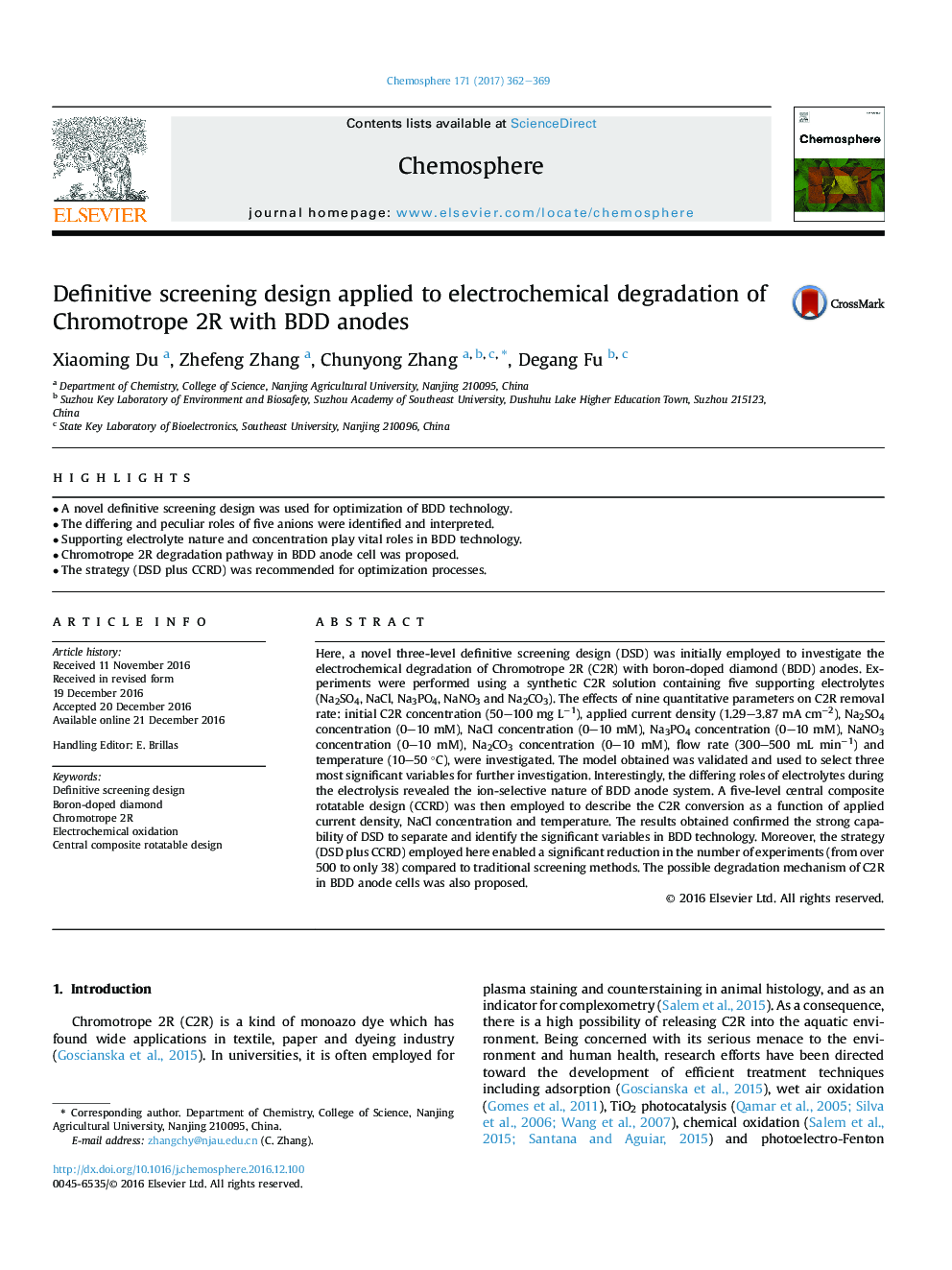| کد مقاله | کد نشریه | سال انتشار | مقاله انگلیسی | نسخه تمام متن |
|---|---|---|---|---|
| 5746392 | 1618800 | 2017 | 8 صفحه PDF | دانلود رایگان |

- A novel definitive screening design was used for optimization of BDD technology.
- The differing and peculiar roles of five anions were identified and interpreted.
- Supporting electrolyte nature and concentration play vital roles in BDD technology.
- Chromotrope 2R degradation pathway in BDD anode cell was proposed.
- The strategy (DSD plus CCRD) was recommended for optimization processes.
Here, a novel three-level definitive screening design (DSD) was initially employed to investigate the electrochemical degradation of Chromotrope 2R (C2R) with boron-doped diamond (BDD) anodes. Experiments were performed using a synthetic C2R solution containing five supporting electrolytes (Na2SO4, NaCl, Na3PO4, NaNO3 and Na2CO3). The effects of nine quantitative parameters on C2R removal rate: initial C2R concentration (50-100 mg Lâ1), applied current density (1.29-3.87 mA cmâ2), Na2SO4 concentration (0-10 mM), NaCl concentration (0-10 mM), Na3PO4 concentration (0-10 mM), NaNO3 concentration (0-10 mM), Na2CO3 concentration (0-10 mM), flow rate (300-500 mL minâ1) and temperature (10-50 °C), were investigated. The model obtained was validated and used to select three most significant variables for further investigation. Interestingly, the differing roles of electrolytes during the electrolysis revealed the ion-selective nature of BDD anode system. A five-level central composite rotatable design (CCRD) was then employed to describe the C2R conversion as a function of applied current density, NaCl concentration and temperature. The results obtained confirmed the strong capability of DSD to separate and identify the significant variables in BDD technology. Moreover, the strategy (DSD plus CCRD) employed here enabled a significant reduction in the number of experiments (from over 500 to only 38) compared to traditional screening methods. The possible degradation mechanism of C2R in BDD anode cells was also proposed.
Journal: Chemosphere - Volume 171, March 2017, Pages 362-369